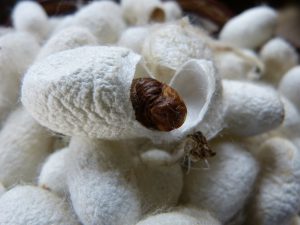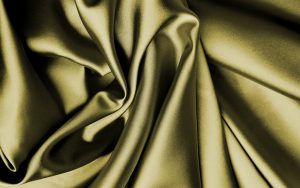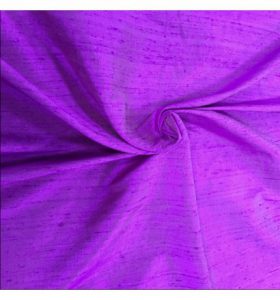Origins
Raw silk is a natural fibre made from a cocoon of different insects, process to produce silk yarns is intense, therefore making this one of the most expensive fabrics on the market and it has been produced for centuries in ancient China. Silk has anciently been associated with the rich due to its luxurious look and feel.
Synthetic silk has been invented as a cheaper option to silk with added benefits such as strength durability and shine. This is often called ‘artificial silk’ usually the synthetic silk is a mixture of Rayon and other fibres such as polyester woven to imitate silk to create satin. Bamboo is also combined with viscose to create something called bamboo silk.


India is the second largest producer of Silk in the world alongside the second largest consumer, with many manufacturers of silk producing the fabric from five states this is a direct effect of many different types of raw silk being produced in India such as mulberry, oak tasar, tropical tasar, muga and eri. The worms that feed off a particular plant are named after that plant, e.g. mulberry silk as the worms feed off a mulberry bush.
Different types of silk produced in India
Mulberry Silk:
The most expensively reared silk worms create this superior silk called mulberry silk. It is produced in many different states in India and is the highest percentage of raw silk being produced.
Tasar Silk:
Tasar Silk or tussar is a wild silk which is produced externally compared to the mulberry silk worms. This creates a natural looking silk which is quite rough and is hard to dye so it’s available in its natural form.
Muga Silk:
It is also known as Asam silk, it’s of a golden yellow colour and is highly used due to the durability aspect of the natural fibre so it can be used in many different products. The Muga silk can be dyed to any colour after it’s bleached. The end result is a shiny luscious silk.
Eri silk:
It was historically produced by tribal communities, it is a denser fiber creating fabrics with a coarse feel if not mixed or combined with other fibers. It has a certain elasticity compared to other silks, which creates a variety of usage. The thermal qualities mean eri silks can be used as a warm fabric or to cool similar to wools and cotton fabrics.
Synthetic silks:
Rayyon is a type of artificial silk used as a cheaper alternative to silk, satin is also another imitation of silk using polyester and viscose fibers.
The main silks mentioned above can come in different finishes and end results once woven, they’re prepared in different ways to create a fabric for different uses.
Handloom:
hand woven silks include fabrics like Jamawar from Jammu and Kashmir, Jamawar is a type of silk brocade traditionally handmade using a handloom. The Jamawar is traditionally known as a big scarf or shawl.
Machine woven:
machine woven silks such as dupion are quite common in mass production natural and synthetic silks such as Satin, Viscose and Nylon.


Different uses of silk
Clothing:
Indians have been wearing silk for many centuries with certain parts of India that have traditional customs where they will wear silk sarees to auspicious ceremonies and weddings as it is said silk is seen as a pure fabric. Banarsi, Dupion and Katan are often used in saaris and Indian bridal wear.
Dupion is usually used for dresses and bridal wear due to the texture and stiffness it’s perfect for creating a structured outfit.
Organza can be used for scarves and delicate dresses due to the sheerness of the fabric that’s very delicate.
Upholstery/curtains/drapes:
Dupion both silk and synthetic can also be used for curtains and upholstery however raw silk would need a backing to prevent any damage by sunlight. Polyester faux dupion can also be used in replacement to raw dupion.
Organza/chiffon either silk or synthetic can be used as drapery due to the sheer fabric that holds a structure.
Conclusion
There are many different types of silks both natural and synthetic used and produced in India, the different combinations of silk and other fibers to create new and innovative fabrics is increasing as fashion and textiles industries are advancing in different directions.
I have mentioned a few of the main examples of commercial silks available, however there are many fabrics that extend from silk such as
Charmeuse, taffeta, chiffon, crape and noil, Silk has started off as a luxurious raw fabric to a versatile blended fabric with an array of use.